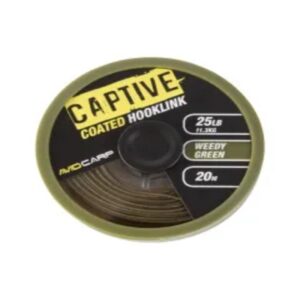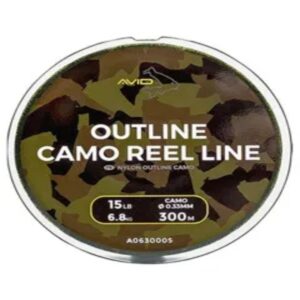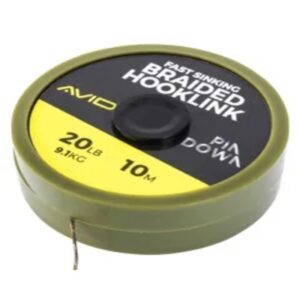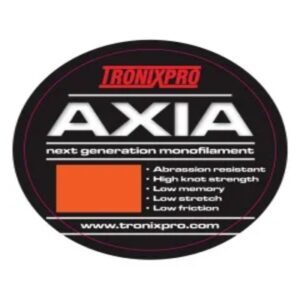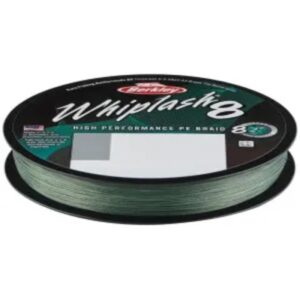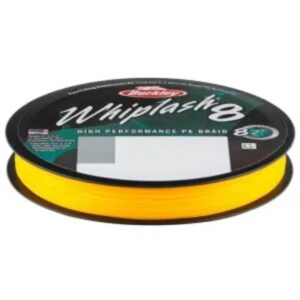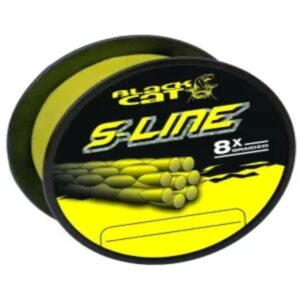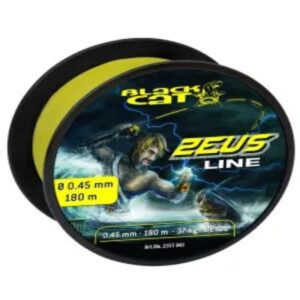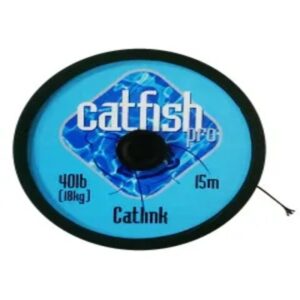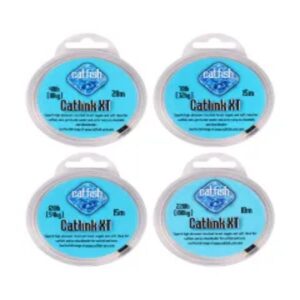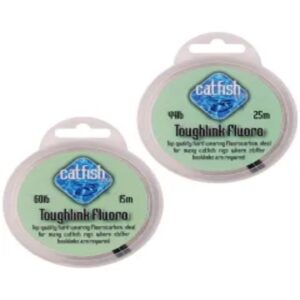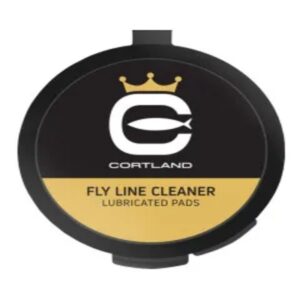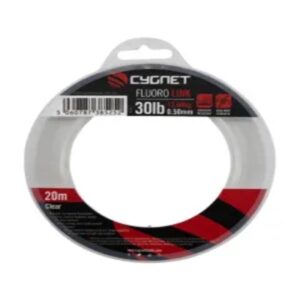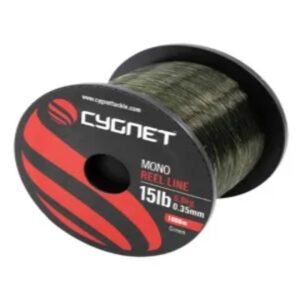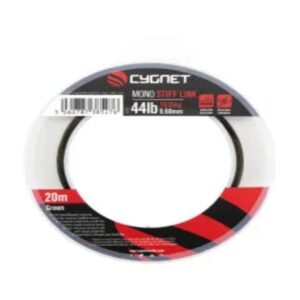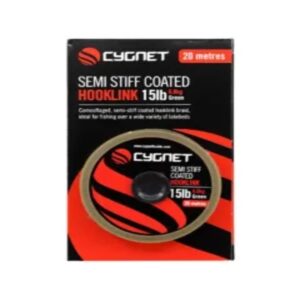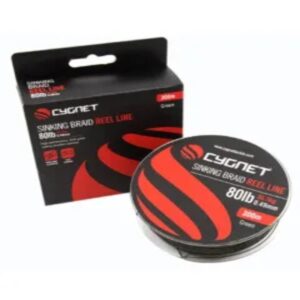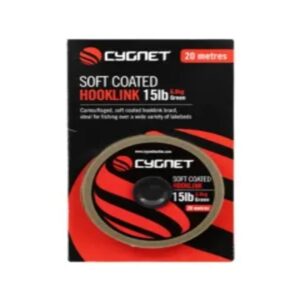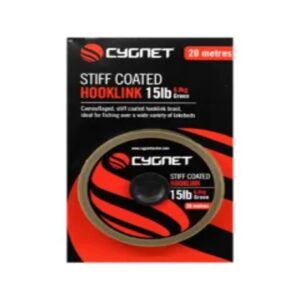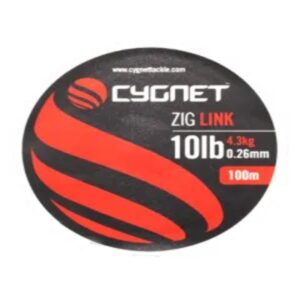Line
-
- Line
Avid Carp Captive Coated Hooklink
- £6.99
- Top-quality coated hooklink Strong, reliable and user friendly Tough outer coating Low diameter Extremely subtle and unobtrusive Sinks quickly
- View Details
-
- Line
Avid Carp Outline Camo Reel Line
- £24.99
- Unrivalled concealment properties Low visibility green with micro flecks Ultra smooth surface finish Unrivalled abrasion resistance Available on 1000m & 300m spools
- View Details
-
- Line
Avid Carp Pin Down Braided Hooklink 20lb
- £9.99
- The most supple Hooklink you will ever use Favoured by Solid PVA bag anglers Features a super supple PTFE fibre construction Made using unique Outline PTFE fibres Fast sinking, highly abrasion resistant material Will blend in to anything it lies over This latest version is even faster sinking Requires absolutely no putty to help it to stay nail to the…
- View Details
-
- Line
Axia Next Generation Red Fishing Monofilament
- £5.99
- A well-priced mainline Ideal for anglers who spool up several reels And for regular line changes Strong and dependable Abrasion resistant Ideal for beach and rough ground fishing High knot strength Reassurance when fishing for big fish and casting long distances Low stretch to improve bite detection Low friction coating to increase casting distances
- View Details
-
- Line
Berkley Whiplash 8 Green Fishing Braid 300m
- £19.99
- 100% PE material Perfectly round braided 8 carrier construction Super Strong and extremely durable Exceptionally smooth for long distance and fast casting Tough and abrasion resistant For Fresh and Saltwater use
- View Details
-
- Line
Berkley Whiplash 8 Yellow Fishing Braid 300m
- £19.99
- 100% PE material Perfectly round braided 8 carrier construction Super Strong and extremely durable Exceptionally smooth for long distance and fast casting Tough and abrasion resistant For Fresh and Saltwater use
- View Details
-
- Line
Black Cat S-Line
- £27.99
- 8-strand, round, extremely durable, braided mainline Designed for all aspects of modern catfish angling S-Line impresses with its very tight braid that absorbs almost no water Combined with an incredible breaking strain Making the line perfectly designed for long casts Great when spinning and weightless, long-range tensioning of the line when buoy fishing The yellow colour makes the line very…
- View Details
-
- Line
Black Cat Zeus Yellow Line
- £14.99
- 4-strand, round, durable, braided mainline Designed for all aspects of modern catfish angling The yellow colour makes the line easy to spot in the dark or when visibility is poor Zeus Line is a reliable link between catfish and angler Impresses with its favourable price-performance ratio
- View Details
-
- Line
Catfish Pro Catlink Kevlar
- £14.99
- The best catfish hooklink available Pure Kevlar fibres, soft supple Highly abrasion resistant and sinks Also ideal as leader for carp Also a hooklink for perch, eels and zander
- View Details
-
- Line
Catfish Pro Catlink XT Braid
- £13.99
- Superb high abrasion resistant braid Supple and soft Ideal for catfish, eels, perch, zander, etc As for carp, use it as a hooklink and Shockleader Available in 4 sizes: 220lb, 120lb, 70lb and 40lb
- View Details
-
- Line
Catfish Pro Tough Link Fluorocarbon
- £13.99
- New low memory hooklink Ideal for stiff hooklink rigs Great when using a Catocopter rig Available in 2 sizes 44lb in 25mtrs 60lb in 15mtrs
- View Details
-
- Line
Cortland Fly Line Cleaner Pads x5
- £6.29
- Pre-Soaked Pads Clean and Dress Your Line Packs of 5
- View Details
-
- Line
Cygnet Fluoro Fishing Link 20m
- £4.99
- Supple, low memory fluorocarbon material Ideal for hooklinks, leaders and boom sections Fast sinking and virtually invisible underwater High abrasion resistant and anti-tangle properties Superb knot strength and reliability
- View Details
-
- Line
Cygnet Mono Fishing Reel Line 1000m
- £3.99
- Perfect, all-round performance Dark green monofilament mainline Supple and fast sinking Hugs the contours of the lakebed Ultra-smooth low diameter mono for distance casting High knot strength and abrasion resistant
- View Details
-
- Line
Cygnet Mono Stiff Fishing Link 20m
- £5.49
- Stiff monofilament material Ideal for creating hooklink booms Crimpable material Creates the perfect length hooklink booms High abrasion resistant Anti-tangle properties Superb knot strength and reliability
- View Details
-
- Line
Cygnet Semi Stiff Coated Fishing Hooklink 20m
- £7.49
- Ideal for fishing over a wide variety of lakebeds Camouflaged, semi-stiff coated hooklink braid Woven, sinking inner braid with low diameter Easily strippable, durable matt outer braid coating Superb knot strength and reliability
- View Details
-
- Line
Cygnet Sinking Braided Fishing Reel Line 300m
- £19.99
- High performance Dark green sinking braided mainline Supple and fast sinking Hugs the contours of the lakebed Ultra-smooth for distance casting High knot strength Abrasion resistant Low stretch for increased bite indication
- View Details
-
- Line
Cygnet Soft Coated Fishing Hooklink 20m
- £7.49
- Camouflaged Ideal for fishing over a wide variety of lakebeds Semi-stiff coated hooklink braid Woven, sinking inner braid with low diameter Easily strippable Durable matt outer braid coating Superb knot strength and reliability
- View Details
-
- Line
Cygnet Stiff Coated Fishing Hooklink 20m
- £7.49
- Ideal for fishing over a wide variety of lakebeds Camouflaged, semi-stiff coated hooklink braid Woven, sinking inner braid with low diameter Easily strippable, durable matt outer braid coating Superb knot strength and reliability
- View Details
-
- Line
Cygnet Zig Fishing Link 100m
- £2.99
- Supple monofilament hooklink Ideal for zig and floater fishing Low diameter hooklink line Neutral buoyancy Ultra-smooth Invisible under water Superb knot strength and reliability
- View Details
Mastering the Invisible Connection with Fishing Lines
Crucial element of angling gear – the fishing line. It’s the invisible connection between you and the fish, and choosing the right line is as essential as selecting the right bait. So, let’s navigate the world of fishing lines, breaking down their types and understanding where each excels in the diverse disciplines of fishing.
1. Carp Fishing Line: Strength and Stealth in Harmony
In the realm of carp fishing, the fishing line is more than just a link; it’s a critical part of the equation. Here, mainlines with high strength and abrasion resistance take center stage. Monofilament lines are a favorite for their shock-absorbing properties, while braided lines provide unparalleled strength and sensitivity. For hooklengths, materials like fluorocarbon are often chosen for their low visibility and enhanced abrasion resistance.
2. Specialist Fishing Line: Tailored Precision for Diverse Tactics
Specialist fishing demands adaptability, and your choice of fishing line plays a pivotal role in this versatility. Whether you’re float fishing, ledgering, or employing intricate tactics, mainlines with a good balance of strength and sensitivity are key. Hooklength materials may vary, with anglers often opting for fluorocarbon for its stealthy presence. Braid finds its place in specialist fishing for its sensitivity and zero stretch characteristics.
3. Predator Fishing Line: Battling Tooth and Claw
When it comes to tangling with toothy predators like pike, mainlines need to be robust and durable. Braided lines are a popular choice for their strength, low stretch, and ability to slice through the water with minimal resistance. Fluorocarbon leaders are often employed for their abrasion resistance and stealthy presence in the water.
4. Coarse/Match Fishing Line: Precision in Pursuit of Perfection
In the finesse-driven world of coarse and match fishing, where precision is paramount, mainlines with low diameter and minimal stretch are favored. Monofilament lines provide excellent knot strength and are often the go-to choice. Hooklength materials, especially fluorocarbon, are prized for their near-invisibility underwater.
5. Sea Fishing Line: Battling the Waves with Confidence
Facing the unpredictable challenges of the sea demands fishing lines that can withstand the salt, waves, and the mighty pull of oceanic predators. For mainlines, anglers often turn to braided lines for their strength and resilience in saltwater conditions. Fluorocarbon leaders excel in invisibility, crucial when tempting wary sea bass and other species.
6. Fly Fishing Line: Precision in the Art of the Cast
In the delicate dance of fly fishing, the fishing line is an extension of the angler’s artistry. Fly lines, specifically designed for this discipline, come in various tapers and weights, each serving a specific purpose. Whether you’re delicately presenting a dry fly on a trout stream or reaching for distance with a saltwater streamer, the right fly line is the key to success.
Types of Fishing Lines: Unraveling the Threads of Connection
Now, let’s break down the specific types of fishing lines that anglers swear by:
- Mainlines: The backbone of your setup, mainlines come in various materials, including monofilament, fluorocarbon, and braided lines, each offering unique characteristics tailored to different fishing scenarios.
- Braid: Renowned for its strength, sensitivity, and minimal stretch, braided lines are favored in various disciplines, from predator fishing to sea angling.
- Hooklength Materials: Materials like fluorocarbon, known for their low visibility and abrasion resistance, are commonly used as hooklengths, especially in carp and specialist fishing.
- Monofilament: A classic choice for its shock-absorbing properties and forgiving nature, monofilament lines find favor in carp fishing and coarse/match angling.
- Fluorocarbon: Prized for its near-invisibility underwater, fluorocarbon is often employed as both mainlines and hooklengths in various disciplines, including carp, specialist, and sea fishing.
- Line Spooling: The art of spooling your reel correctly is as crucial as choosing the right line. Ensure a smooth, evenly distributed spool to optimize casting performance and avoid tangles.
- Fly Lines: Specially designed for the intricacies of fly fishing, these lines come in various tapers and weights to match the angler’s casting style and the specific conditions of the water.
So, whether you’re battling carp in the still waters, tempting sea bass in the surf, or presenting a delicate dry fly to rising trout, let your choice of fishing line be the invisible thread that connects your passion with the precision needed to conquer the waters.

